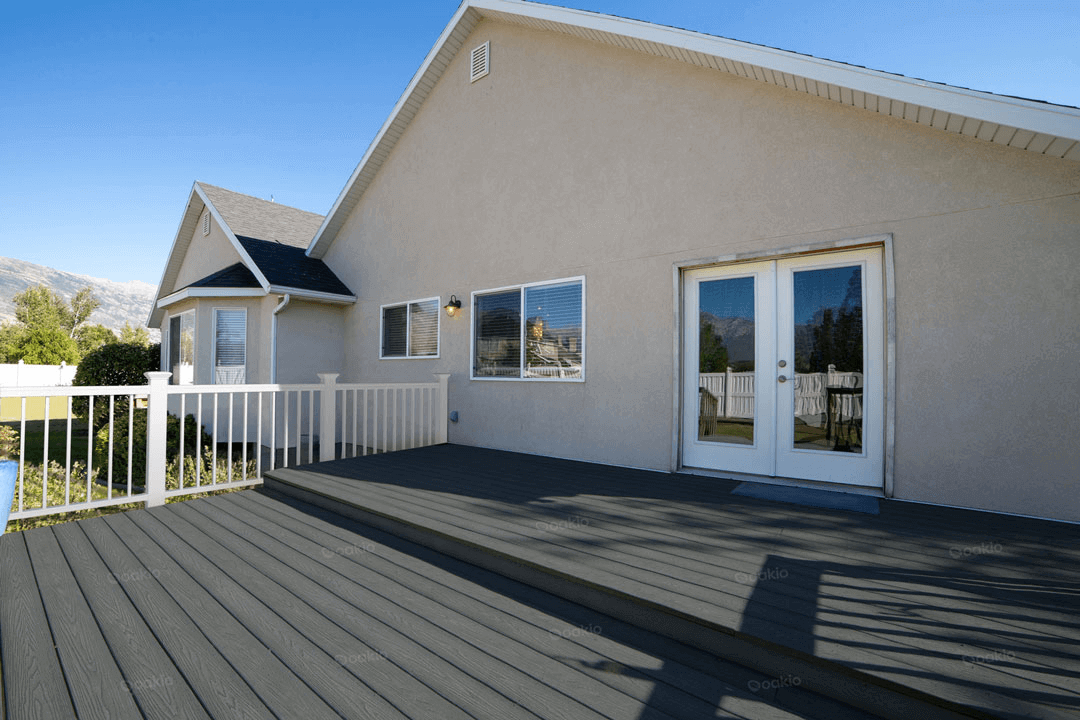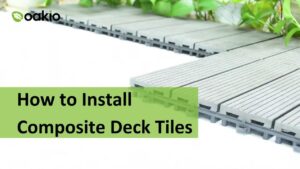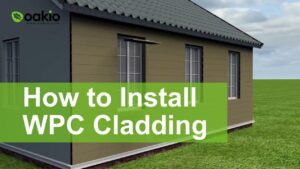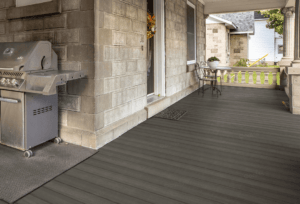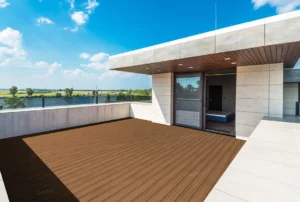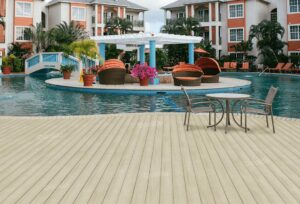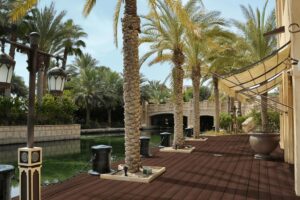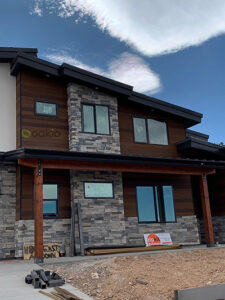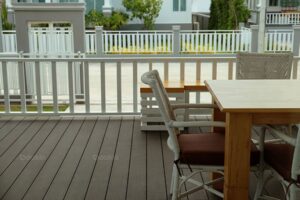How to Prevent Mold from Growing on WPC Flooring
WPC flooring, often referred to as wood-plastic composite (WPC) board, boasts remarkable resistance to water, flames, insects, and corrosion, making it an ideal solution for outdoor applications. Nevertheless, challenges such as moisture and mold growth can surface over time if not addressed meticulously. In this article, we will explore the reasons that mold grows on WPC flooring and how to prevent it.
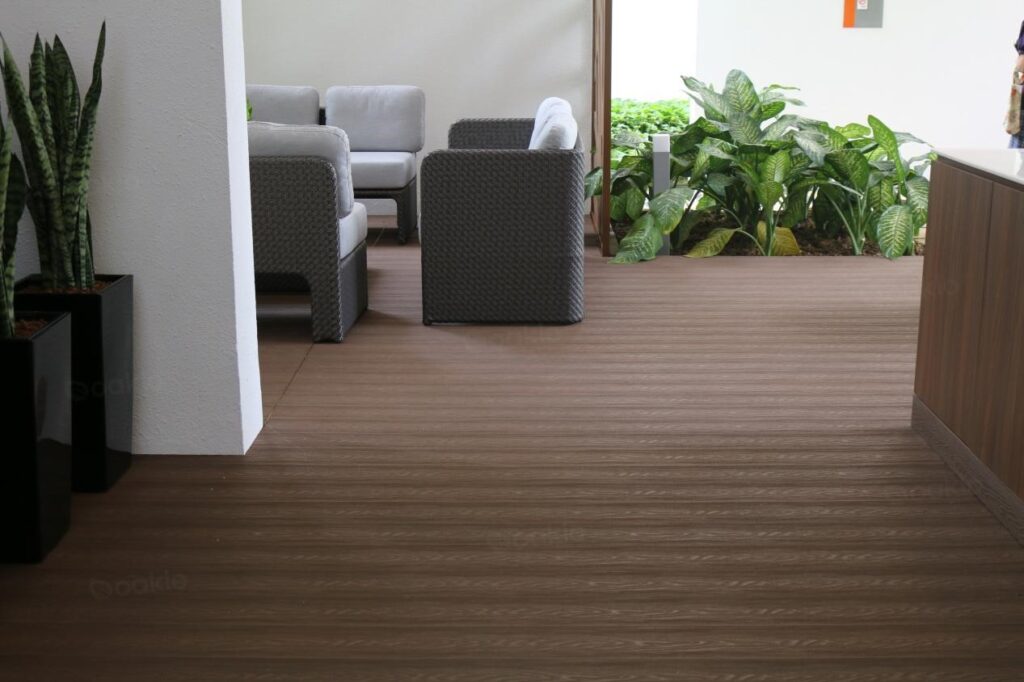
Reasons for Mold growth on WPC Flooring
WPC flooring is known for its durability, versatility, and resistance to various environmental factors. However, like any material, it is susceptible to mold growth under certain conditions. Understanding the reasons behind mold growth on WPC flooring is crucial for effective prevention and maintenance.
- Moisture Accumulation
Excessive moisture is a primary catalyst for mold development on WPC flooring. Whether from spills, leaks, or high humidity levels, when moisture penetrates the WPC surface and lingers, it creates an ideal environment for mold to thrive.
- Improper Installation
Incorrect installation practices can contribute to mold issues. Gaps or uneven installation may allow moisture to seep through, promoting mold growth. It’s essential to follow manufacturer guidelines and ensure a proper installation process to maintain the integrity of the WPC flooring.
- Inadequate Subfloor Ventilation
A poorly ventilated subfloor can lead to moisture buildup beneath the WPC flooring. This trapped moisture provides a conducive environment for mold spores to settle and proliferate.
- Subfloor Material Issues
If the subfloor material underneath the WPC is prone to moisture absorption or is already compromised by mold, it can contribute to the development of mold on the WPC surface.
- Environmental Factors
WPC flooring installed in areas with frequent temperature fluctuations or exposure to direct sunlight may experience condensation, especially if the subfloor temperature differs significantly from the air temperature. This condensation can lead to increased moisture levels, fostering mold growth.
- Poor Cleaning Practices
Neglecting regular cleaning and maintenance can lead to the accumulation of dirt, debris, and organic matter on the WPC surface. This debris, when combined with moisture, becomes a breeding ground for mold.
- Humid Climate Conditions
Regions with consistently high humidity levels pose a challenge for WPC flooring. The persistent moisture in the air can infiltrate the flooring, creating an environment conducive to mold development.
Preventing mold growth on WPC flooring involves a proactive approach. Proper installation, ensuring adequate ventilation, managing humidity levels, and implementing regular cleaning practices are essential steps. Additionally, promptly addressing any water spills or leaks and using mold-resistant cleaning agents can significantly contribute to maintaining the pristine condition of WPC flooring. By understanding and mitigating these factors, homeowners can enjoy the benefits of WPC flooring without the threat of mold-related issues.
Preventive Measures for Mold Growth on WPC Flooring
Preventing mold growth on WPC flooring involves a series of proactive measures and consistent maintenance practices. By addressing potential risk factors, homeowners can preserve the integrity and aesthetics of their WPC flooring. Here are some preventive measures homeowner can use:
- Control Moisture Levels
The most critical preventive measure is controlling moisture. Immediately address spills, leaks, or water accumulation on the WPC surface. Regularly monitor humidity levels, especially in areas prone to moisture, and use dehumidifiers if necessary.
- Professional Installation
Ensure that the WPC flooring is installed by professionals following manufacturer guidelines. Proper installation minimizes the risk of gaps or uneven surfaces that could allow moisture infiltration.
- Subfloor Ventilation
Maintain adequate ventilation in the subfloor to prevent moisture buildup. This is particularly important in areas like basements or crawl spaces where proper airflow might be a challenge.
- Quality Subfloor Materials
Choose subfloor materials that are resistant to moisture and mold. If the subfloor is prone to issues, addressing those concerns before installing WPC flooring is crucial.
- Regular Cleaning
Establish a routine for regular cleaning of the WPC surface. Remove dirt, debris, and organic matter promptly to eliminate potential mold breeding grounds. Use a mild soap or WPC-specific cleaning agents for optimal results.
- Proper Environmental Conditions
Be mindful of the environmental conditions in the installation area. Avoid installing WPC flooring in spaces with extreme temperature variations or consistent exposure to direct sunlight, as these conditions can contribute to moisture-related issues.
- Humidity Control Systems
In regions with high humidity, consider installing humidity control systems. These can help regulate indoor humidity levels and minimize the risk of mold development.
By implementing these preventive measures, homeowners can enjoy the many benefits of WPC flooring while ensuring its longevity and resistance to mold-related challenges. Regular vigilance and a commitment to maintaining a dry and clean environment will contribute significantly to the sustained beauty and functionality of WPC flooring.
Conclusion
In conclusion, while wood-plastic composite (WPC) flooring offers unparalleled resistance to water, flames, insects, and corrosion, it is crucial to address potential challenges like mold growth with a proactive and informed approach. To prevent mold growth on WPC flooring, homeowners can adopt preventive measures such as controlling moisture levels, ensuring professional installation, maintaining subfloor ventilation, selecting quality subfloor materials, and implementing regular cleaning practices. Additionally, creating proper environmental conditions and incorporating humidity control systems in high-humidity regions contribute significantly to mold resistance.
Trending Reading
What Are the Differences Between the WPC Board and PVC Board?
[2024 Update] How Long Does WPC Decking Last?
